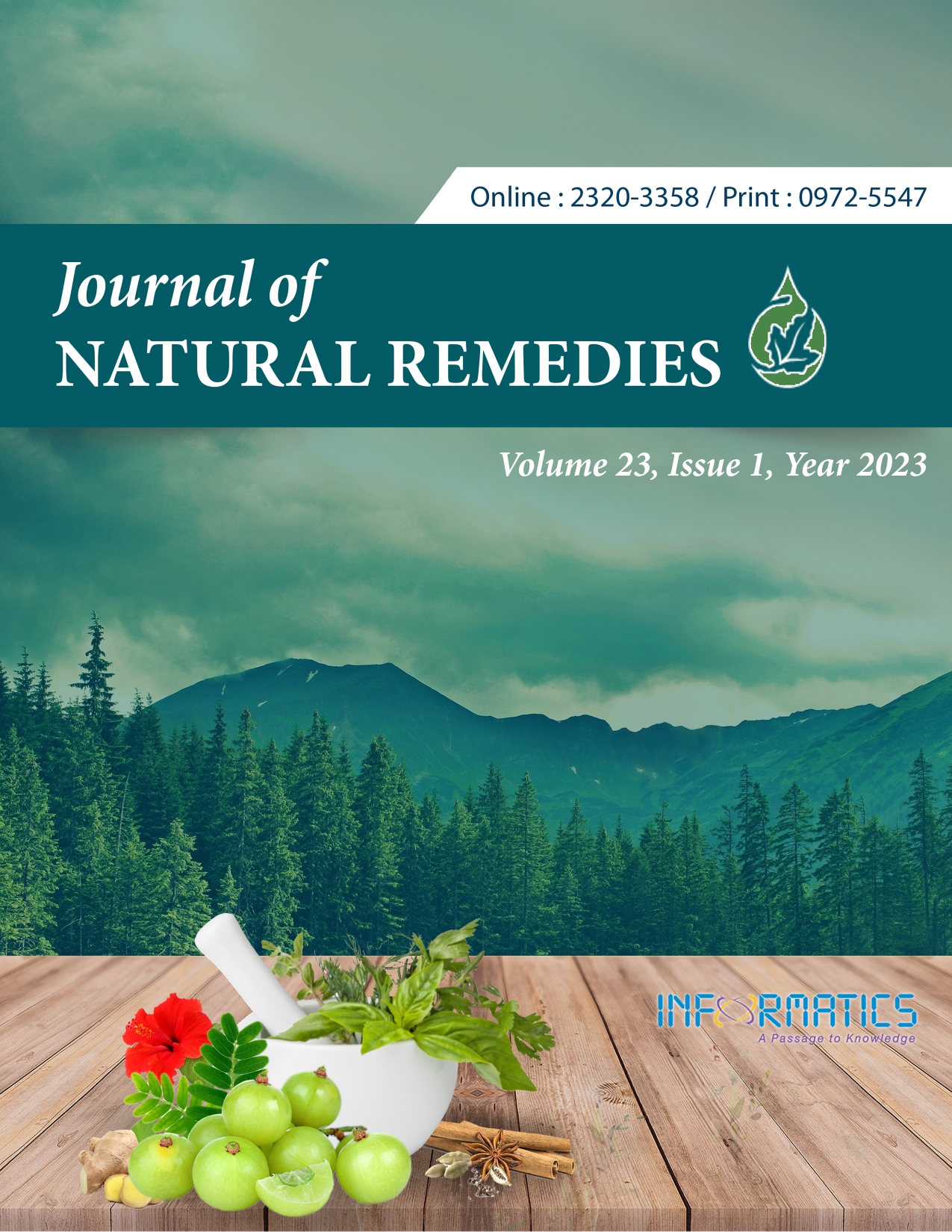High Dilutions of Homeopathic Drugs Interact with Human Serum Albumin as Revealed by Electronic Spectroscopy
DOI:
https://doi.org/10.18311/jnr/2023/32063Keywords:
Homeopathic Potencies, Human Serum Albumin, Modification of Protein, Water Structure.Abstract
Homeopathy uses drugs in extreme dilutions that are mostly devoid of the original drug molecules. Drug-induced water structures are thought to be responsible for their therapeutic effect. We have already observed that homeopathic potencies first interact with serum albumin, which is present in the oral mucosa. In this experimental study, we have shown that the homeopathic potencies of three drugs, Bryonia alba (Br), Rhux toxicodendron (Rt), and Thuja occidentalis (Th), initiate their action on Human Serum Albumin (HSA). The potency-HSA complexation has been observed by electronic spectroscopy. The control, HSA plus water, shows only one peak at 216 nm, but the potencies plus HSA show two peaks, one at 205 nm and another around 265 nm. The first peak is due to the peptide bond. The first peak in the control shows a marked red shift. The second peak at higher wavelength is due to the aromatic amino acids. The first peak with the potencies shows a marked blue shift, possibly due to a change induced by the potencies on the peptide bond. Unlike water control the potencies interact with aromatic amino acids. It is evident that the complexes made up of HSA and potency are different from those of the control. This means that homeopathic potencies are not ordinary water. It is concluded that water control interacting with HSA shows a single peak in UV-spectra at lower wavelength, but homeopathic potencies show one additional peak at a higher wavelength besides the peak at the lower wave length. HDs can produce effects on aromatic amino acids. The mother tinctures and their HDs show marked differences from each other in their electronic spectra.
Downloads
Metrics
Published
How to Cite
Issue
Section
License
Copyright (c) 2023 Prof. Nirmal Chandra Sukul, Dr. Raj Kumar Singh, Sumit Ghosh, Nivedita Pande, Anirban Sukul (Author)

This work is licensed under a Creative Commons Attribution 4.0 International License.
Accepted 2023-01-10
Published 2023-03-23
References
Sarkar T, Konar A, Sukul NC, Sukul A. High and Ultra Low Concentrations of Sodium Chloride Initiate their Action on Binding Sites of a Protein. Environ and Ecol. 2018; 36(1A):209-213.
Konar A, Mondal P, Sukul N, Sukul A. Dilutions of a Homeopathic Potency with Water do not Alter Number of Binding Sites During their Binding Interaction With a Protein. Environ and Ecol. 2019; 37(1B):318-323.
Konar A, Mondal P, Sukul NC, Chakraborty I, Sukul A. Ultra high dilutions of an anti-diabetic drug of plant origin act on binding site of insulin. J Altern Med Res. 2018; 10(4):369-374.
Mondal P, Sukul NC, Konar A, Sarkar T, Sohel MA, Sengupta A, Chakraborty I, Sukul A. Cannabis as homeopathic medicine in extreme dilutions: Thermal analysis for their differentiation and action on a protein. Indian J Biochem Biophys. 2019; 506-513.
Oppenheim FG. Preliminary Observation on the presence and Origin of Serum Albumin in Human Saliva. Helvetica Odontologica Acta. 1970.
Zhang CZ, Cheng XQ, Li JY, Zhang P, Yi P, Xu X, Zhou XD. Saliva in the diagnosis of diseases. International Journal of Oral Science. 2016; 133–137. https://doi. org/10.1038/ijos.2016.38 DOI: https://doi.org/10.1038/ijos.2016.38
Singh RK, Ghosh S, Sukul NC, Pande N, Sukul A, Nandi M, Pal A, Pal M. Homeopathic Drugs Modify Water Structure in Ethanol Water Solution in Their Extreme Dilutions as Revealed by Electronic and Vibrational Spectroscopy. Water. 2021; 1-9.
Boericke and Tafel. American Homeopathic Pharmacopeia. 9th edn. Philadelphia. 1920.
Farrington EA, Farrington H. Clinical materia medica. Delhi: Gyan. 1908.
Nienhaus K, Nienhaus GU. Probing Heme Protein– Ligand Interactions by UV/Visible Absorption Spectroscopy. Methods in Molecular Biology. Humana press Inc. 1999 Riverview Drive, suite 208 Totoya New Jersey. 2005; 215-241. https://doi. org/10.1385/1-59259-912-5:215 DOI: https://doi.org/10.1385/1-59259-912-5:215
Hadichegeni S, Goliaei B, Taghizadeh M, Davoodmanesh S, Taghavi F, Hashemi M. Characterization of the interaction between human serum albumin and diazinon via spectroscopic and molecular docking methods. Human and Experimental Toxicology. 2017; 1-13. DOI: https://doi.org/10.1177/0960327117741752
Stehle G, Sinn H, Wunder A, Schrenk HH, Stewart JC, Hartung G, Maier-Borst W, Heene DL. Plasma protein (albumin) catabolism by the tumor itself – implication for tumor metabolism and the genesis of cachexia. Crit Rev Oncol Hematol. 1997; 77. https:// doi.org/10.1016/S1040-8428(97)00015-2 DOI: https://doi.org/10.1016/S1040-8428(97)00015-2
Chen X, Weber I, Harrison RW. Hydration water and bulk water in proteins have distinct properties in radial distributions calculated from 105 atomic resolution crystal structures. J Phys Chem B. 2008; 112(38):12073-80. https://doi.org/10.1021/jp802795a DOI: https://doi.org/10.1021/jp802795a
Albert L, Cox Michael M, Nelson DL. Lehninger principles of biochemistry. 6thed. New York: Freeman. 2005.
Stank A, Kokh DB, Fuller JC, Wade RC. Protein binding pocket dynamics. ACC Chem Res. 2016; 809- 15. https://doi.org/10.1021/acs.accounts.5b00516 DOI: https://doi.org/10.1021/acs.accounts.5b00516
Chakraborty I, Dutta S, Sukul A, Chakravarty R, Sukul NC. Variation in free and bound water molecules in different homeopathic potencies as revealed by their Fourier Transform Infrared spectroscopy (FTIR). Int J High Dilution Res. 2014; 189. https://doi. org/10.51910/ijhdr.v13i49.716 DOI: https://doi.org/10.51910/ijhdr.v13i49.716
Sarkar T, Konar A, Sukul NC, Sohel Md A, Sengupta A, Sukul A. DSC reveals variation in enthalpy associated with free water molecules in water ethanol solution exposed to X-rays and magnetic field. Clin Exp Homeopathy. 2018; 50.
Konar A, Sarkar T, Chakraborty I, Sukul NC, Majumder D, Singha A, Sukul A. Raman spectroscopy reveals variation in free OH groups and hydrogen bond strength in ultrahigh dilutions. Int J High Dilution Res. 2016; 15(2):2. https://doi.org/10.51910/ ijhdr.v15i2.819 DOI: https://doi.org/10.51910/ijhdr.v15i2.819

 Nirmal Chandra Sukul
Nirmal Chandra Sukul









 0.35
0.35 24
24 0.161
0.161